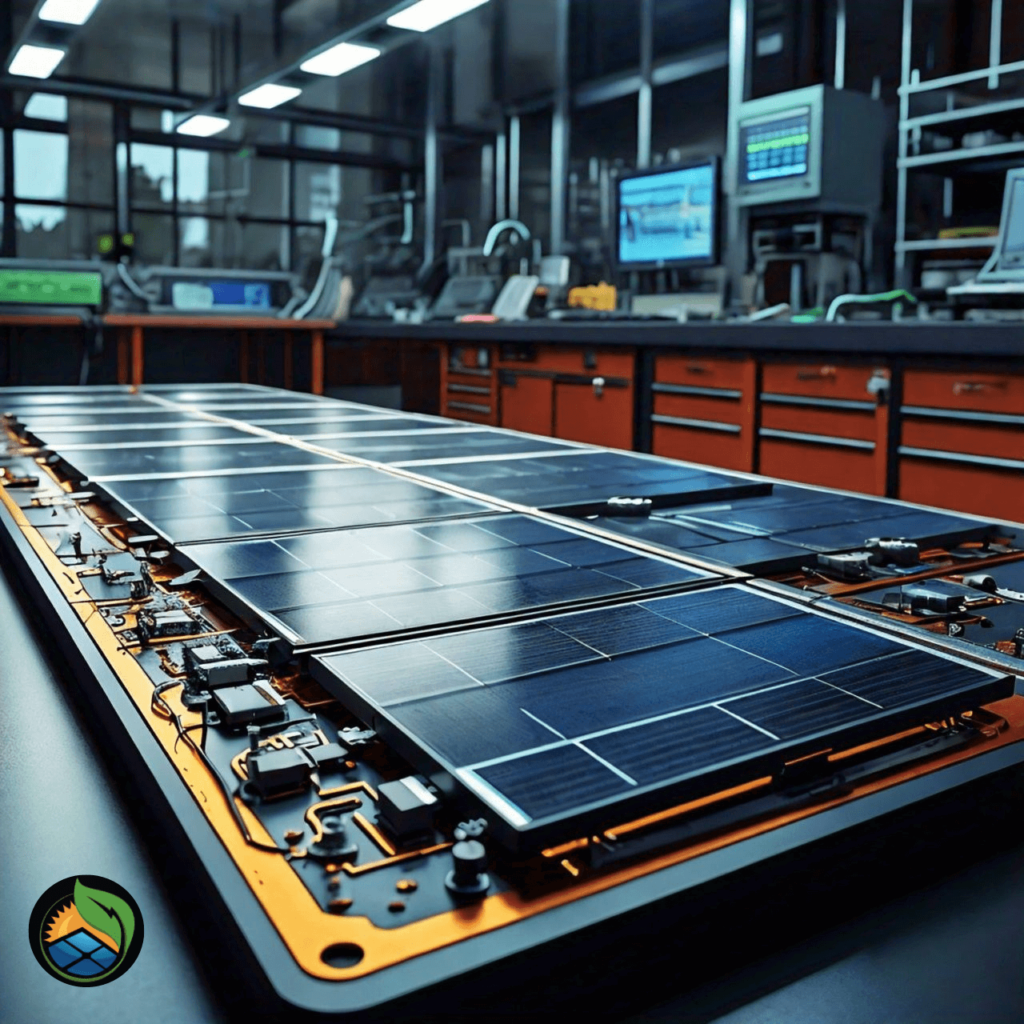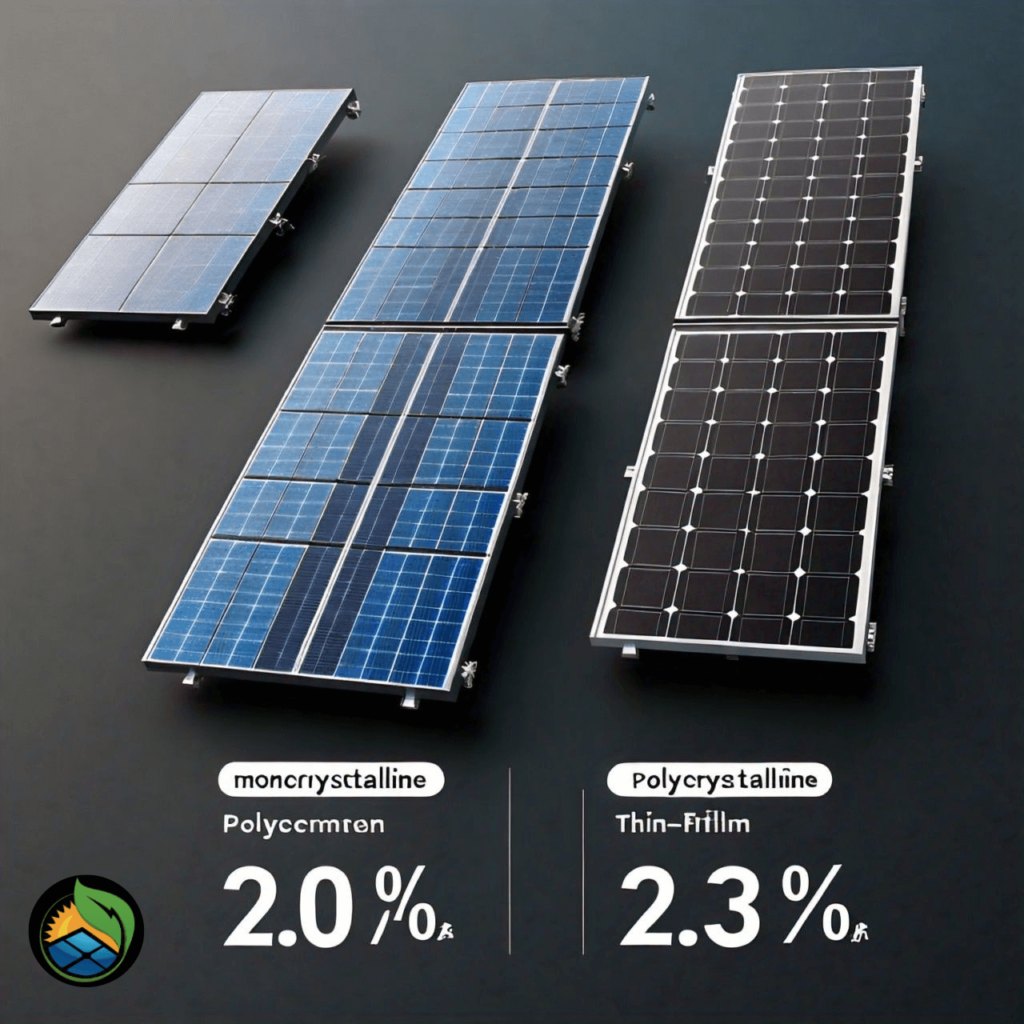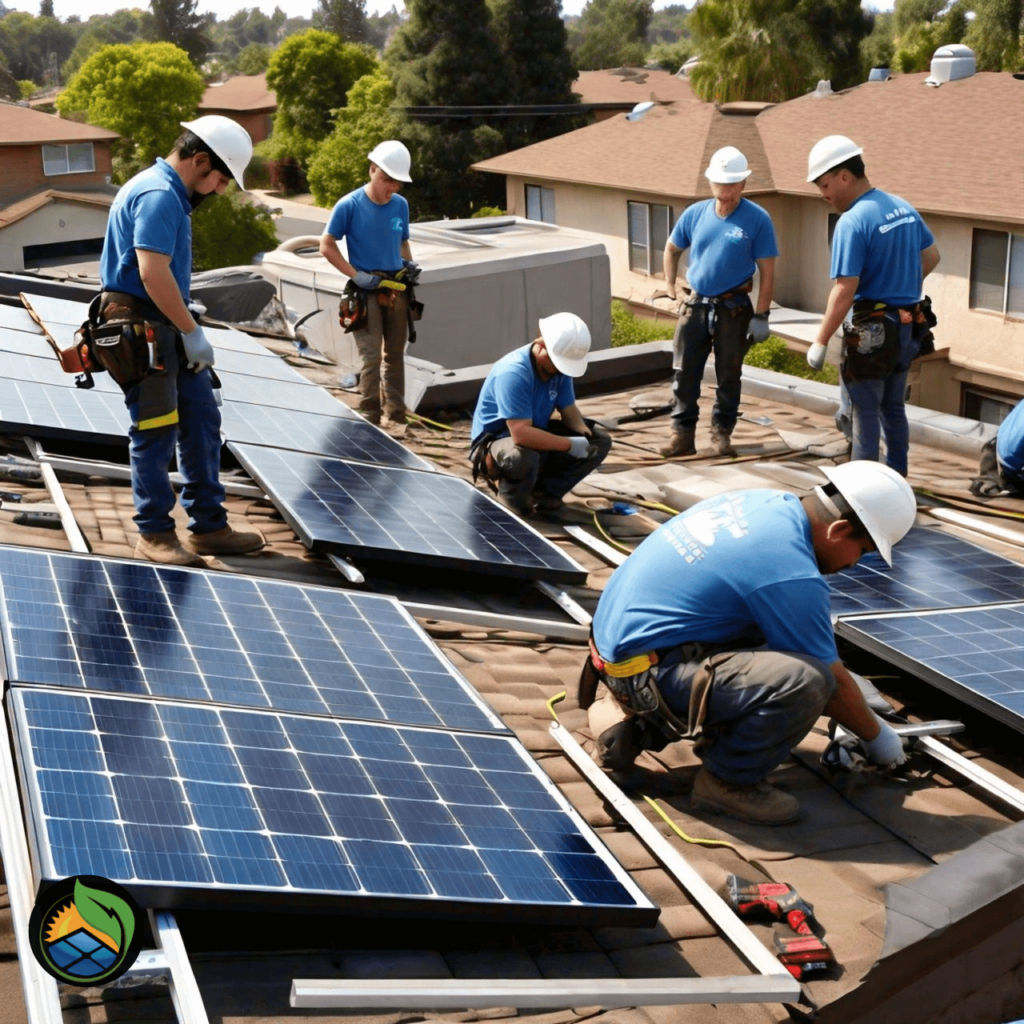This blog post examines the most efficient solar panel technology on the market and examines the different types and their performance characteristics so you can make an informed decision.
As the world moves toward more sustainable energy sources, solar energy has become increasingly popular. With so many solar panel technologies available, choosing the best one can be daunting.
The Most Efficient Solar Panels
The efficiency of solar panels is a critical factor in choosing a solar energy system. Efficient panels can produce more electricity in a smaller area, making them ideal for residential rooftops and commercial spaces. This section reviews the most powerful panels available today, highlighting their effectiveness and unique features.
Overview of Top-Performing Panels
Several solar panel technologies stand out for their high efficiency and advanced features. These include monocrystalline, polycrystalline and thin film panels. Among them, some models from manufacturers such as SunPower, Aiko Solar, Recom Tech, Longi Solar and Canadian Solar have set new benchmarks for performance and reliability. This overview will help you understand the characteristics of each type.

Understanding Efficiency
Solar panel efficiency refers to the ability of a solar cell to convert sunlight into usable electrical energy. It is measured as a percentage, which shows how much of the sunlight hitting the panel is converted into electricity. Higher efficiency means higher power output, which is especially important in facilities with limited space.
Historical Efficiency Trends
Over the years, advances in solar technology have greatly improved the efficiency of panels. The efficiency of earlier solar panels was less than 10%, but the efficiency of modern panels can exceed 20%. This section traces historical trends in solar panel efficiency and highlights the key technological breakthroughs that led to these improvements.
Factors Affecting Solar Panel Efficiency
Several factors affect solar panel efficiency, including sunlight conditions, angle and placement of panels, temperature, solar cell technology, size and configuration of panels, and radiation and shade. Understanding these factors can help optimize the performance of your solar energy system.
Sunlight Conditions
The amount and intensity of sunlight directly affect the efficiency of solar panels. Clear, sunny days create the best conditions for maximum energy production. However, even on cloudy days, solar panels can produce significant amounts of electricity, albeit with lower efficiency.
Solar panel angle and placement
Solar panel angle and placement are important to maximize sunlight. Ideally, the panels should be positioned to receive the most direct sunlight during the day. This section reviews best practices for panel orientation and tilt for optimal performance.
Effect of temperature
The efficiency of solar panels decreases as the temperature increases. High temperatures can reduce the voltage of solar cells, reducing overall efficiency. Understanding the effect of temperature on solar panel performance can help select and install panels in a way that minimizes heat loss.
Solar Cell Technology
Different solar cell technologies offer different efficiencies. Monocrystalline cells are known for their high efficiency, while polycrystalline and thin-film cells offer cost-effective alternatives with slightly lower efficiencies. This section discusses the advantages and disadvantages of each technique.
Panel Size and Configuration
The size and configuration of solar panels can affect their efficiency and output. Larger panels with more cells generally produce more electricity, but the overall efficiency of the system depends on how those panels are arranged and interconnected. This section looks at optimal settings for different applications.
Emissivity and Shading
Solar panels work best in full sunlight. Shading by trees, buildings or other obstacles can significantly reduce the efficiency of the panels. This section discusses the importance of proper site assessment and the use of technologies such as microinverters and power optimizers to mitigate shading effects.
Types of Efficient Solar Cells
There are many efficient solar cells available, each with unique properties and performance characteristics. These include monocrystalline N-type IBC cells, monocrystalline N-type HJT cells, monocrystalline N-type TOPcon cells, thin film cells, polycrystalline cells and other advanced cell types. This section provides an in-depth overview of each type.
Monocrystalline N-Type IBC Cells
Interdigital Back Contact (IBC) cells are the most efficient solar cells available. Made from ultra-pure monocrystalline silicon, the cells have a unique design that minimizes electrical losses and maximizes power. This section discusses the advantages and applications of IBC cells.
Monocrystalline N-Type HJT Cells
Heterojunction (HJT) cells combine crystalline silicon with thin layers of amorphous silicon to improve efficiency. These cells provide excellent performance in a variety of conditions, including high temperatures and low light. This section discusses the advantages of HJT cells and their potential for widespread use.
Monocrystalline N-type TOPcon cells
Tunnel oxide passivated contact cells (TOPcon) represent a significant advance in solar cell technology. These cells have a passive layer that reduces electron recombination, resulting in better efficiency and performance. This section reviews the features and benefits of TOPcon cells.
Thin Film
Thin film solar cells are lightweight and flexible, making them ideal for applications where traditional panels may not be suitable. Although thin film technologies are generally less efficient than crystalline silicon cells, they offer unique advantages in terms of installation and versatility. This section discusses different types of thin film cells and their applications.
Polycrystalline
Polycrystalline solar cells are made from silicon crystals and offer a cost-effective alternative to monocrystalline cells. Although slightly less efficient, polycrystalline cells are popular in residential and commercial applications due to their affordability and reliability. This section highlights the features and benefits of polycrystalline cells.
Other Advanced Cell Types
In addition to more common solar cell technologies, several advanced cell types are being developed to push the limits of efficiency and performance. These include tandem cells, perovskite cells, and organic photovoltaic cells. This section provides an overview of these new technologies and their potential impact on the solar industry.
How much do different types of solar panels cost?
The price of solar panels varies according to the type of technology and the production process. Monocrystalline panels are usually the most expensive due to their high efficiency and advanced manufacturing techniques. Polycrystalline and thin film panels offer more affordable options with different performance levels. This section describes the cost differences between different types of solar panels.
Monocrystalline
Monocrystalline panels are known for their high efficiency and elegant appearance, but their price is high. This section examines the factors that contribute to the higher cost of monocrystalline panels and the long-term benefits they offer in terms of energy savings and sustainability.
Polycrystalline
Polycrystalline panels are less expensive than monocrystalline panels, making them a popular choice for budget-conscious consumers. Although they offer slightly lower efficiency, their affordability and reliability make them a viable option for many installations. This section discusses the cost and performance of polycrystalline panels.
Thin film
Thin film panels are usually the most affordable option and offer flexibility and a lightweight design. However, their lower efficiency means they may require more space to achieve the same output as crystal panels. This section discusses the cost effectiveness of thin film panels and their ideal applications.
Top manufacturers and efficient panels
Several manufacturers are pioneers in the production of efficient solar panels. Companies like SunPower, Aiko Solar, Recom Tech, Longi Solar and Canadian Solar have developed panels that set new standards for performance and reliability. This section introduces these major manufacturers and their flagships.
SunPower Maxeon 7 Series
SunPower’s Maxeon 7 Series panels are known for their exceptional efficiency and durability. Using advanced IBC cell technology, these panels offer industry-leading performance and a solid warranty. This section highlights the features and benefits of the Maxeon 7 series.
Aiko Solari Neostar Series
Aiko Solari Neostar Series panels use cutting-edge technology to achieve high efficiency and reliability. Known for their innovative design and competitive pricing, the panels are gaining popularity in the solar energy market. This section discusses the advantages of the Neostar series.
Recom Tech Black Tiger Series
Recom Tech’s Black Tiger Series features efficient monocrystalline cells and an aesthetically pleasing design. Designed for both residential and commercial applications, these panels offer excellent performance and value. This section looks at the main features of the Black Tiger series.
Longi Solar Hi-Mo 6 Scientist Series
Longi Solar Hi-Mo 6 Scientist Series panels are designed for high efficiency and sustainable performance. Thanks to advanced PERC technology, these panels offer excellent energy production and reliability. This section covers the features and benefits of the Hi-Mo 6 Scientist series.
Canada Solar’s TOPHiKu6 Series
Canada Solar’s TOPHiKu6 Series combines high efficiency with a competitive price. Thanks to advanced cell technology and robust construction, these panels are ideal for a variety of applications. This section highlights the advantages of the TOPHiKu6 series.
Why Efficiency Matters
Efficient solar panels offer a number of benefits, including faster payback times, a smaller solar project footprint and higher energy output. This section explores why efficiency is a critical factor in choosing a solar panel system.

Advantages of Efficient Panels
Efficient panels can produce more electricity in a given area, making them ideal for installations where space is limited. They also perform better in a variety of conditions, including low light and high temperatures. This section describes the main benefits of efficiency panels.
Faster Payback Time
Investing in efficient panels can result in a faster payback time through higher energy production and potential utility bill savings. This section looks at how efficient panels provide a faster return on investment.
Smaller Solar Project
Efficient panels can reduce the size of a solar project, making installation and maintenance easier. This section discusses the benefits of a smaller solar project, including lower installation costs and reduced visual impact.
Investing in Efficiency Panels
Although the initial cost of efficiency panels may be higher, their long-term benefits often outweigh the initial investment. This section explores the financial benefits of investing in efficient solar panels, including potential savings on energy bills and increased property values.
Things to Consider Before Investing
There are several factors to consider before investing in a solar system, including your home and surroundings, energy use, solar incentives and credits, and the type of solar panel. This section provides a comprehensive guide to help you make an informed decision.
Home and Environment
The location and condition of your home can greatly affect the performance of your solar energy system. This section discusses the importance of evaluating roof suitability, available sunlight and potential shading issues before installing solar panels.
Energy Use
Understanding energy use patterns can help determine the size and type of solar panel system you need. This section contains tips for analyzing energy usage and choosing the right system for your needs.
Solar Incentives and Credits
Various incentives and credits are available to cover the cost of installing solar panels. This section discusses various financial incentives, including federal and state tax credits, rebates, and grants, and how they can reduce the overall cost of your solar energy system.
Type of Solar Panel
Choosing the right type of solar panel is important to maximize efficiency and return on investment. This section compares different types of solar panels, including monocrystalline, polycrystalline, and thin film, so you can choose the one that best suits your needs.
Which panel is best for your installation?
The best type of solar panel for your installation depends on several factors, including space availability, energy goals and budget. This section provides recommendations based on different scenarios to help you choose the most appropriate panel for your project.

Recommendation based on space availability and goals
Depending on available space and your energy goals, different types of panels may be more suitable. This section provides customized recommendations for monocrystalline, polycrystalline and thin film panels based on specific installation scenarios.
Monocrystalline
Monocrystalline panels are ideal for installations with limited space due to their high efficiency and power. This section discusses the advantages of monocrystalline panels for maximizing energy production in limited areas.
Polycrystalline
Polycrystalline panels are a cost-effective option for larger installations where space is not at a premium. This section looks at the advantages of polycrystalline panels for budget projects with a lot of space.
Thin film
Thin film panels are suitable for unusual installations such as curved surfaces or portable applications. This section highlights the versatility and unique applications of thin film panels that make them a viable option for certain use cases.
FAQs
What is the most efficient solar panel technology?
The most efficient solar panel technology currently available is monocrystalline N-Type Interdigitated Back Contact (IBC) cells, known for their high efficiency and performance.
Which type of solar panel is best?
The best type of solar panel depends on factors like space availability and budget. Monocrystalline panels are ideal for high efficiency, while polycrystalline panels offer a cost-effective option.
What is the latest technology in solar panels?
The latest advancements include N-Type TOPCon cells, HJT cells, and perovskite tandem cells, aiming to improve efficiency and performance.
What is the most common solar panel technology?
The most common solar panel technology is polycrystalline silicon panels, widely used for their balance of cost and efficiency.
Which is the best solar panel in Pakistan?
Top solar panel choices in Pakistan include SunPower, Longi Solar, and Canadian Solar for their efficiency and reliability in the local climate.
Conclusion
Several factors such as efficiency, cost and application suitability must be considered when choosing the best solar panel technology. Efficient panels offer many benefits, from faster payback to a smaller project. However, the best choice depends on your specific needs and circumstances. By understanding the different types of solar panels and their performance characteristics, you can make an informed decision that maximizes the benefits of solar energy for your home or business.
